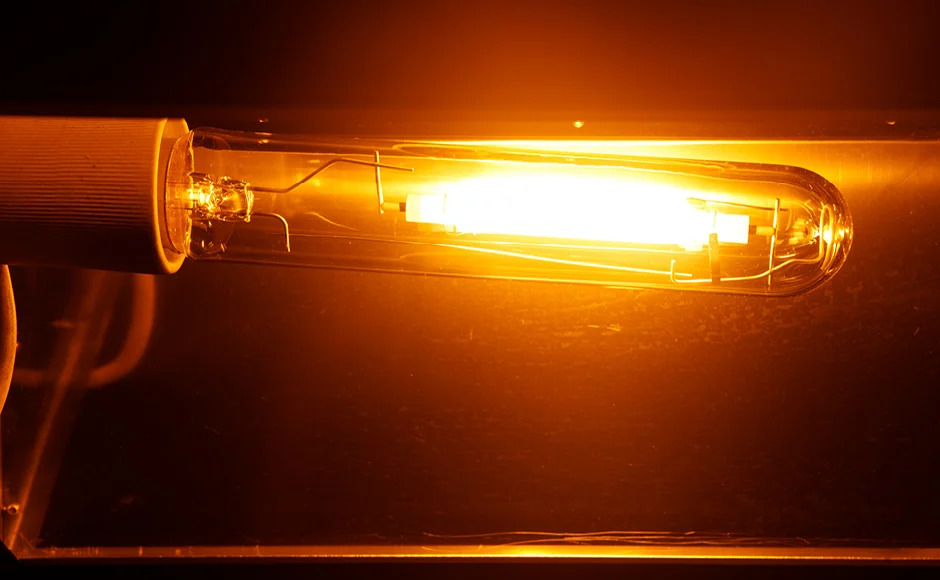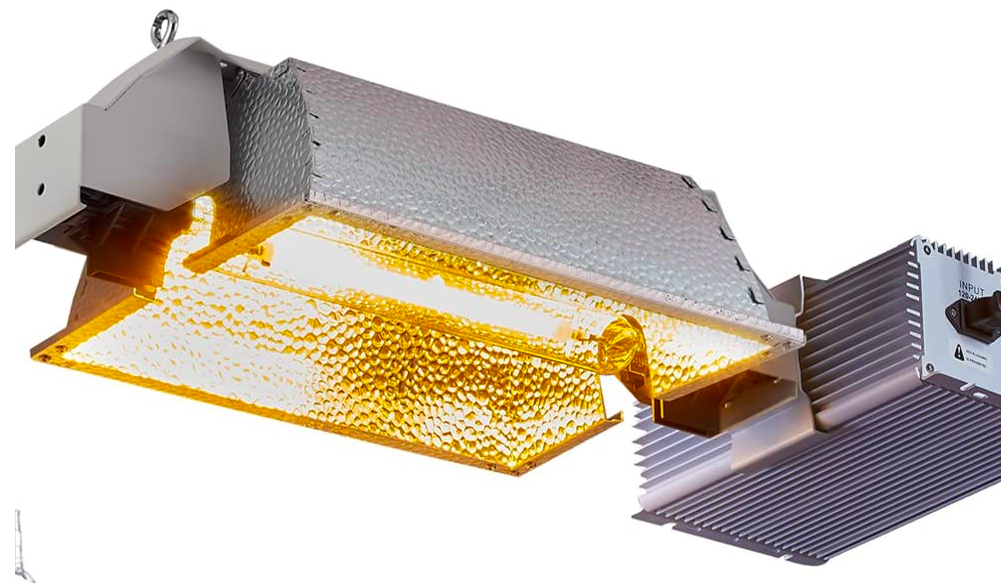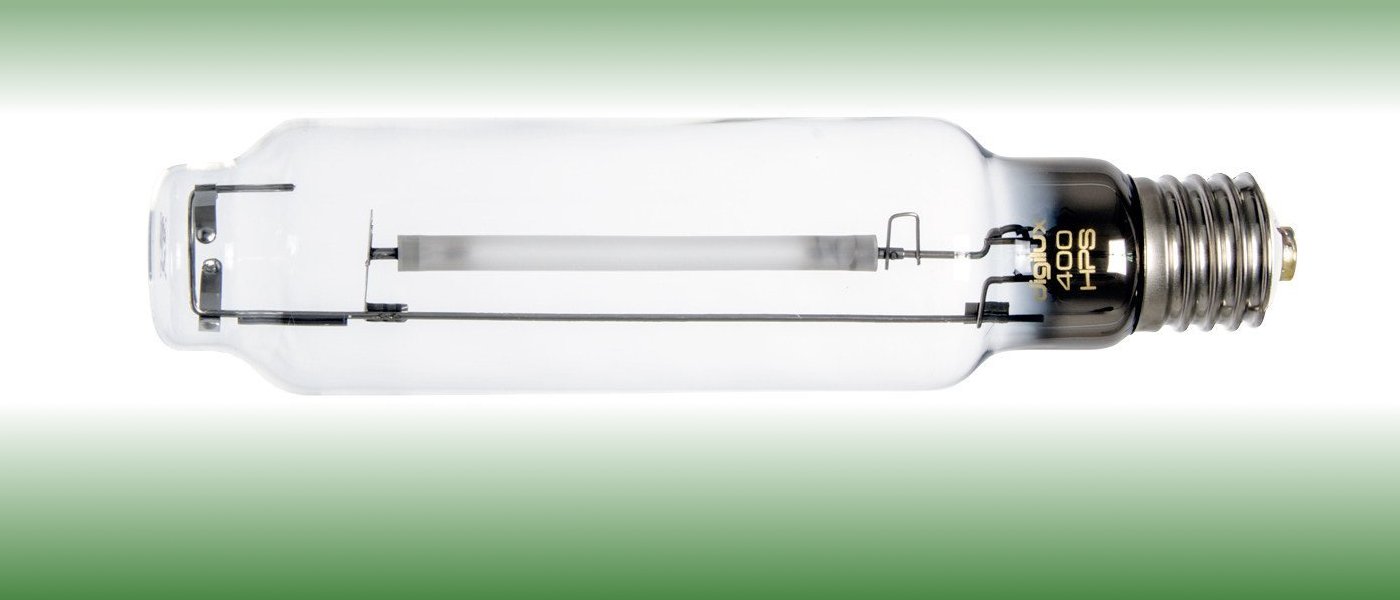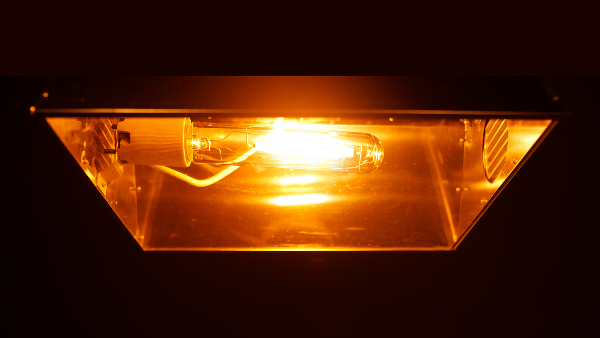What Is HPS Grow Lighting?
HPS, or high-pressure sodium, grow lighting is a type of indoor growing technology that has been around for decades. It's a popular choice among indoor gardeners, due to its intense light output and ability to promote both vegetative and flowering growth. HPS lights use specific light spectrums, which are beneficial for different phases of plant growth. While it may have a higher upfront cost than other lighting options, HPS technology is overall energy efficient and can provide significant advantages to indoor growers.
Types of HPS Lights
High-Pressure Sodium (HPS) grow lights are widely used by indoor gardeners due to their powerful light output and energy efficiency. HPS lights are particularly beneficial during the flowering stage of plant growth, making them a popular choice for indoor growers. There are two main types of HPS lights: single-ended and double-ended.
High Pressure Sodium (HPS) Lights
High Pressure Sodium (HPS) Lights are a type of high-intensity discharge grow light commonly used in indoor gardening. They emit an intense yellow/orange light which stimulates plant growth during the flowering stage. The light spectrum emitted by HPS lights is not full-spectrum, which means it is not ideal for vegetative growth.
HPS lights are highly beneficial for indoor gardening as they offer intense light output, making them the desired choice for experienced growers. Besides, they have a longer lifespan compared to other grow lights like metal halides, and the bulbs don't need to be replaced as frequently. HPS lights offer uniform light intensity, helping to promote plant growth and improve yields in indoor gardening.
There are two types of HPS lights available in the market - the high-pressure sodium lights and the low-pressure sodium lights. High-pressure sodium lights emit a broader spectrum of light colors, making them suitable for both vegetative growth and flowering stages.
When choosing the right wattage for your indoor garden, consider the number of plants you have and the amount of space between them. Typically, HPS lights come in wattage options of 250W, 400W, 600W, and 1000W. Make sure to match the wattage to the size of your indoor garden. For instance, a small grow tent would need a light between 250W and 400W, while a larger indoor garden would require a higher wattage.
Metal Halide (MH) Lights
If you're an indoor gardener, you already know that one of the most important factors for plant growth is light intensity and quality. While High-Pressure Sodium (HPS) lights are popular among indoor growers for their intense light output and energy efficiency, Metal Halide (MH) lights are also commonly used in indoor gardening setups.
MH lights are a type of HID (High-Intensity Discharge) grow light, and they differ from HPS lights in terms of the light spectrums they emit. While HPS lights are known for producing reddish light, MH lights provide a bluish-white light that is more evenly distributed across the full spectrum. As a result, MH lights are particularly useful during the vegetative growth stage, when plants require a broader range of light spectrums to develop healthy foliage and strong stems.
MH bulbs are constructed using a quartz arc tube containing a mix of mercury vapor and metal halides, which are compounds containing elements such as sodium, scandium, and iodine. The arc tube is encased in a glass panel grow light reflector, which helps to direct the light downwards towards the plants. There are different types of MH bulbs available, including standard bulbs and conversion bulbs, which can be used to retrofit HPS lighting fixtures.
Benefits of Using HPS Grow Lighting for Vegetative Growth Stages
HPS grow lighting is a popular choice for indoor gardeners to its ability to provide intense light that promotes plant growth. One of the significant benefits of HPS grow lighting is its ability to enhance vegetative growth stages.
During the vegetative stage, plants require a specific spectrum of light to grow taller, wider and develop more leaves. HPS bulbs emit yellow light, which is perfect for plant growth during this stage. It encourages rapid, healthy growth, and encourages strong, sturdy stems that can support flowers or fruit in the next stage.
Another benefit of HPS grow lighting is that it is available in a wide variety of wattages, providing growers with options when it comes to choosing the perfect intensity light output for their grow area. This level of precision gives growers greater control over their plants' growth and can help them achieve the desired results more quickly.
With HPS grow lighting, indoor gardeners and growers don't have to worry about the intensity of the light affecting their plants. HPS grow lights are specifically designed for indoor plant cultivation and offer a uniform spectrum of light that helps ensure consistent plant growth.
Advantages of Using HPS Grow Lighting During Flowering Stages
When it comes to indoor gardening, the flowering stage is a critical phase. It's important to provide your plants with the best possible lighting to promote optimal growth and bud development. And that's where HPS grow lighting comes into play.
HPS or High-Pressure Sodium grow lights are highly recommended for enhancing flowering during the plant growth cycle. HPS lights are known for their yellow and red light spectrums that provide the perfect light wavelengths for flowering plants. These spectrums then help increase blooms and develop high-quality buds that are ready for harvest.
Moreover, the yellow and red light spectrums of HPS grow lights provide a higher light intensity compared to other grow lights. This intense light can significantly increase plant growth and development; thus, leading to a higher yield of healthier, stronger plants.
How to Choose an HPS Light
When it comes to indoor plant cultivation, choosing the right grow light is crucial for successful gardening. High pressure sodium (HPS) grow lights are popular amongst indoor gardeners due to their intense light output and energy efficiency. However, there are various factors to consider when selecting an HPS grow light to ensure optimal plant growth during both vegetative and flowering stages.
Intensity and Light Output
One of the most crucial factors in indoor gardening is the intensity of light. High-Pressure Sodium (HPS) grow lighting systems are commonly used by indoor growers for their intense light output during the flowering stages of the plant growth. HPS lights, also known as high-intensity discharge (HID) lights, produce a bright, intense light that helps stimulate plant growth.
The light output of HPS grow lights is measured in lumens and optic watts, with higher numbers indicating higher light output. HPS bulbs have a high light output, and their efficiency makes them a popular choice among indoor gardeners.
Light Spectrum
When it comes to indoor gardening, light is one of the most important factors to consider. Plants require different spectrums of light at different stages of growth. HPS (High-Pressure Sodium) grow lighting is a popular choice among indoor gardeners due to its intense light, high light output, and energy efficiency. However, to ensure optimal plant growth and yield, it's important to consider the light spectrum of HPS grow lights.
The light spectrum refers to the range of wavelengths that are emitted by the grow light. The spectrum of light that plants require varies during different stages of the growth cycle. During the vegetative stage, plants require blue spectrums to promote leaf growth. In contrast, during the flowering stage, plants require red and orange spectrums to encourage the development of buds and flowers.
HPS grow lights emit a more limited spectrum of light compared to LED grow lights. While HPS lights provide a broader spectrum than metal halide, they still lack the blue and UV wavelengths that are essential for promoting vegetative growth. As a result, HPS grow lights are more suited for the blooming and flowering phases of plant growth.
Energy Efficiency and Upfront Costs
HPS (High-Pressure Sodium) grow lighting systems have been a popular choice for indoor gardeners. These lights emit yellow light and generate intense light output, making them ideal for the flowering stage of plants. However, with concerns over energy efficiency and rising electricity costs, many growers are now looking towards LED (Light Emitting Diode) grow lights as an alternative.
One of the main factors that growers consider when choosing a lighting system is energy efficiency. HPS grow lights use a lot of electricity and, while they are powerful and effective, the upfront costs of these systems can be significant. In comparison, LED grow lights are up to 40% more efficient than HPS lights, which means they use less electricity to produce the same amount of light. This makes them an attractive option for growers who are looking to reduce their energy consumption and save money over time.
Digital Ballasts Versus Magnetic Ballasts
When it comes to HPS grow lighting systems, one of the key decisions that content writers need to make is whether to use digital ballasts or magnetic ballasts. Both types of ballasts serve a similar function, namely to regulate the voltage and current flowing to the HPS bulb. However, there are several key differences between digital ballasts and magnetic ballasts that writers need to be aware of in order to make an informed decision.
First, digital ballasts tend to be more energy-efficient than magnetic ballasts. This is because digital ballasts use microprocessors to optimize the amount of energy being sent to the bulb, whereas magnetic ballasts simply regulate the current. As a result, digital ballasts can save growers a considerable amount of money on electricity costs over the life of the system.
Second, digital ballasts produce less heat than magnetic ballasts. This is because digital ballasts utilize solid-state electronics, which generate less radiant heat than the magnetic coils used in magnetic ballasts. This is especially important for indoor growers, who need to maintain cooler temperatures to prevent their plants from becoming overheated.
However, there are some situations in which magnetic ballasts may still be preferred by growers. For example, magnetic ballasts are often less expensive upfront than digital ballasts, which can be attractive to growers who are working on a tight budget. Additionally, some growers may prefer the simplicity and reliability of magnetic ballasts, which have been used in HPS grow lighting systems for decades.
Final Thoughts on HPS Grow Lighting
It's an intense lighting solution that provides high light output and uniform light spectrums that are beneficial for plant growth.
It's essential to replace HPS bulbs every 10-14 months, as their brightness and output will decrease over time. This can affect the quality and quantity of your plant growth. Replacing bulbs regularly ensures that you're maintaining optimal lighting conditions for your plants.
HPS grow lighting is a great option for indoor gardeners, but it's essential to consider the pros and cons, choose the right wattage, and use additional equipment to maximize plant growth. Don't forget to replace your HPS bulbs regularly to maintain optimal lighting conditions for your plants.












